Naboo was a bountiful planet in the Chommell sector of the Mid Rim, in the Trailing Sectors and close to the border of the Outer Rim Territories. It was home to the indigenous Gungan species and to a population of humans known as the Naboo. Naboo was pushed to the forefront of galactic politics as the birthplace of the Dark Lord of the Sith Sheev Palpatine, who served as its representative in the Senate of the Galactic Republic.
Under the guise of his Sith title Darth Sidious, Palpatine secretly engineered an invasion of his peaceful homeworld by the Trade Federation, a megacorporation in a bid for power. Ostensibly done in protest over proposed taxation of formerly free trade routes, the Federation's invasion led to an outpouring of support from the Senate for both Palpatine and the newly-elected Queen of Naboo, Padmé Amidala. Amidala led a successful resistance movement and removed the Federation from her world during the Battle of Naboo. Palpatine subsequently rose to the office of the Supreme Chancellor of the Republic, with Amidala eventually taking his place as the planet's senatorial representative.
Naboo would commit itself firmly to democracy in the intervening years, staying loyal to the Republic during the pan-galactic Clone Wars, which saw several military engagements against the Confederacy of Independent Systems come to the planet. By the time of the war's end, Palpatine had amassed considerable power and proclaimed himself the head of a new Galactic Empire. Palpatine's reign would eventually be ended by the Alliance to Restore the Republic, a rebel movement led by Amidala's children, Leia Organa and Luke Skywalker.
Despite his origins on the planet, Palpatine did not care at all for his homeworld and, following his death, Naboo was named a priority target for Operation: Cinder, a protocol that the Sith Lord had put in place to destroy Imperial worlds should they fail to protect their Emperor. Through the intervention of Organa and Queen Sosha Soruna, however, Naboo was spared from ruin and went on to become a member of the successor state to the Alliance, the New Republic. Decades later, the planet would again fight against tyranny, rising up against the military junta of the First Order during its war with Organa's Resistance.
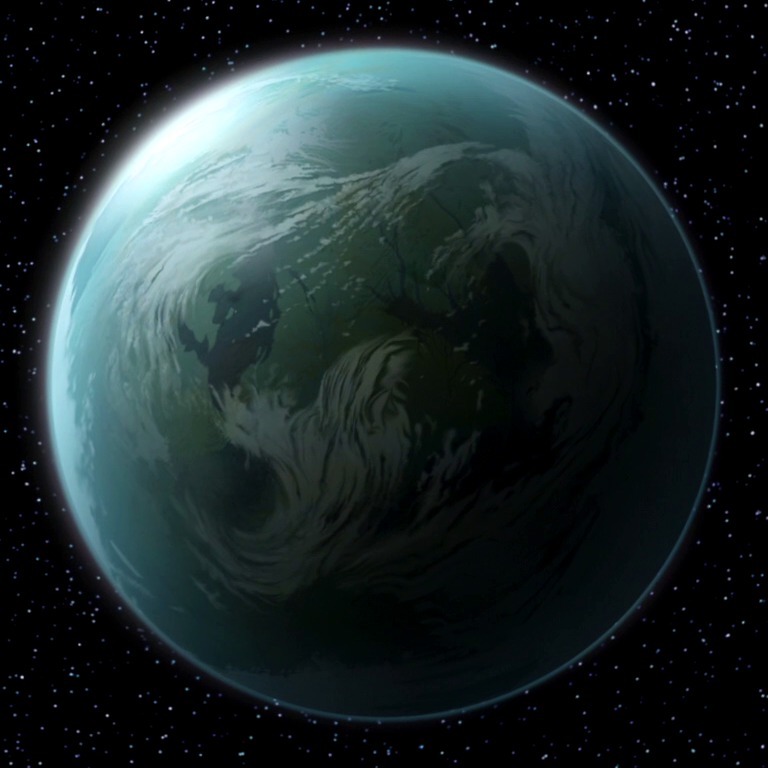
The picturesque planet of Naboo was located in the galaxy's Mid Rim region.
Naboo was a small pastoral world in the Mid Rim, located near the border of the Outer Rim Territories. Unlike most other worlds, the ancient planet lacked a molten core, and instead comprised a conglomerate of large, rocky bodies that made up a network of tunnels and flooded caves. The native Gungans, who built their homes in the waters of Naboo, so deep that they went right through the planet, which they rarely ventured into the core, fearing the ravenous sea beasts which resided in areas such as the Caves of Eleuabad. Despite this, certain Gungan navigators utilized time-honored trade routes through the planet's structure, which served as the most expedient avenues to reach other areas of the planet. Naboo's interior was rich with plasma, a naturally-occurring energy unique to the planet, and this coupled with its lack of molten core gave Naboo a reputation as an enigma to astrophysicists, who regarded the world's structure as an extremely rare phenomenon in the galaxy.
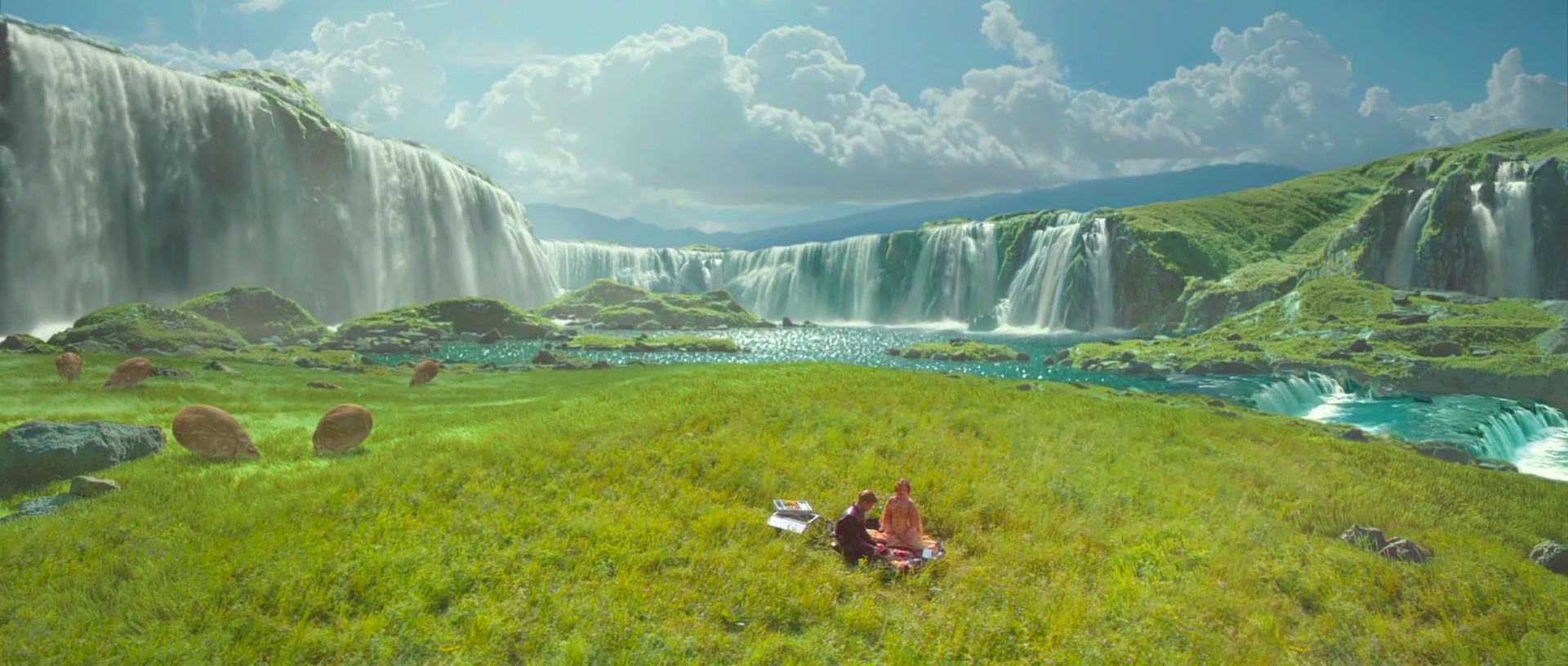
With its grassy plains and waterfalls, Naboo was known as an idyllic world.
Naboo's surface comprised a vast array of different landscapes, from rolling plains and grassy hills to swampy lakes caused by the water-filled network of deep-sea tunnels. The swamps acted as a gateway to the world's seas, where legendary creatures dwelt. Beside its natural features, Naboo was considered a world of classical beauty due to the aesthetics of its population centers. The porous crust's natural plasma was harvested for energy and building material, and was generally thought to be the key to many of the planet's secrets.
While most of Naboo's land animals were peaceful, as exemplified by the gentle shaak, the planet's oceans, which held an abundance of life, teemed with menacing creatures, such as the opee sea killer, the sando aqua monster, and the colo claw fish.
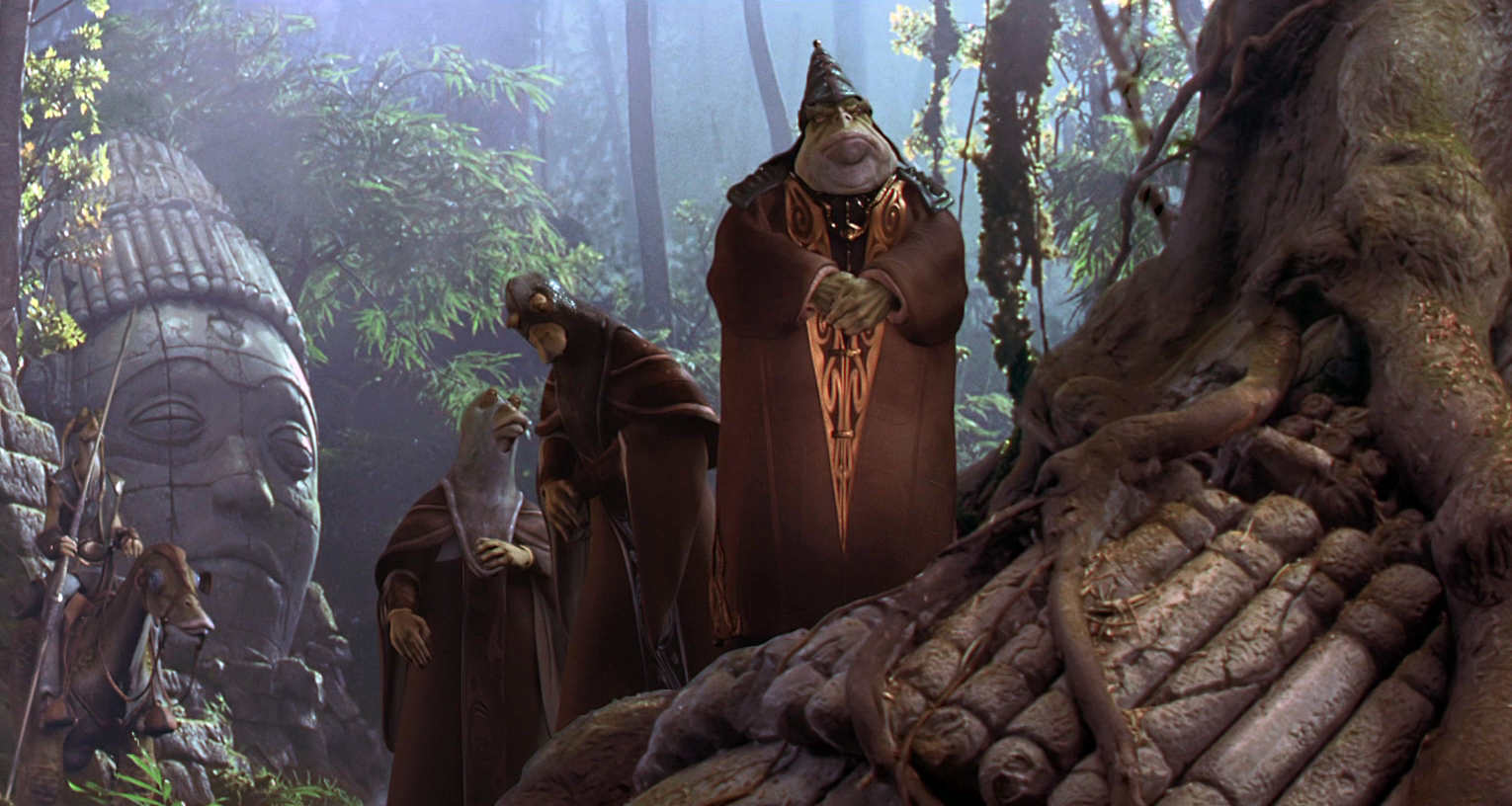
Gungans were the original inhabitants of Naboo prior to the arrival of offworlders.
Originally, Naboo was home to the amphibian Gungans. The earliest offworlders to arrive were a Reptilian species known as the Elders who warred against the Gungans. Eventually, the Elders vanished as mysteriously as they arrived, leaving only stone statues behind.

The Naboo were the descendants of human colonists who migrated from Grizmallt.
Approximately around 4000 BBY, Grizmallti people had discovered the planet, which they had named Nabu, after one of their principal deities. Naboo quickly became notorious as a vacation spot and as a private hunting preserve amongst big-game hunters across the Mid Rim, although it would be around a century before permanent human settlement. Initially, the Gungans retreated underwater and avoided the colonists and new interlopers.
While the Gungans flourished for thousands of years before, this only lasted until around . Fleeing a brutal civil war, a group of humans from the planet Grizmallt crash-landed on Naboo and set up a small colony. As they established their own society, they initially kept separate from the Gungans. Led by Kwilaan, the colonists ventured into the Gallo Mountains, created a farming community at the Dee'ja Peak, establishing their presence on the planet and eventually taking its name for themselves. The Naboo calendar based its epoch around the arrival of Kwilaan. When the colonists made contact with the Gungans, tensions arose between the two peoples, culminating a between the two species. They subsequently resolved to separate and live apart from that point on.
The Naboo colonists later expanded to other uninhabited planets in the Chommell sector, such as Karlinus. Naboo imposed a contract on the colonists of these other planets, wherein Naboo would give the new colonies a loan to cover the start-up costs of colonization. In exchange, the colonies became legally obligated to provide Naboo with any supplies it deemed were necessary if called upon in times of emergency. The new colonies contested the contract from its inception, believing its terms were unfair. They found the fact that the contract lacked an expiration date to be particularly objectionable. Under the contract, Naboo took advantage of every other planet in the Chommell sector from time to time.
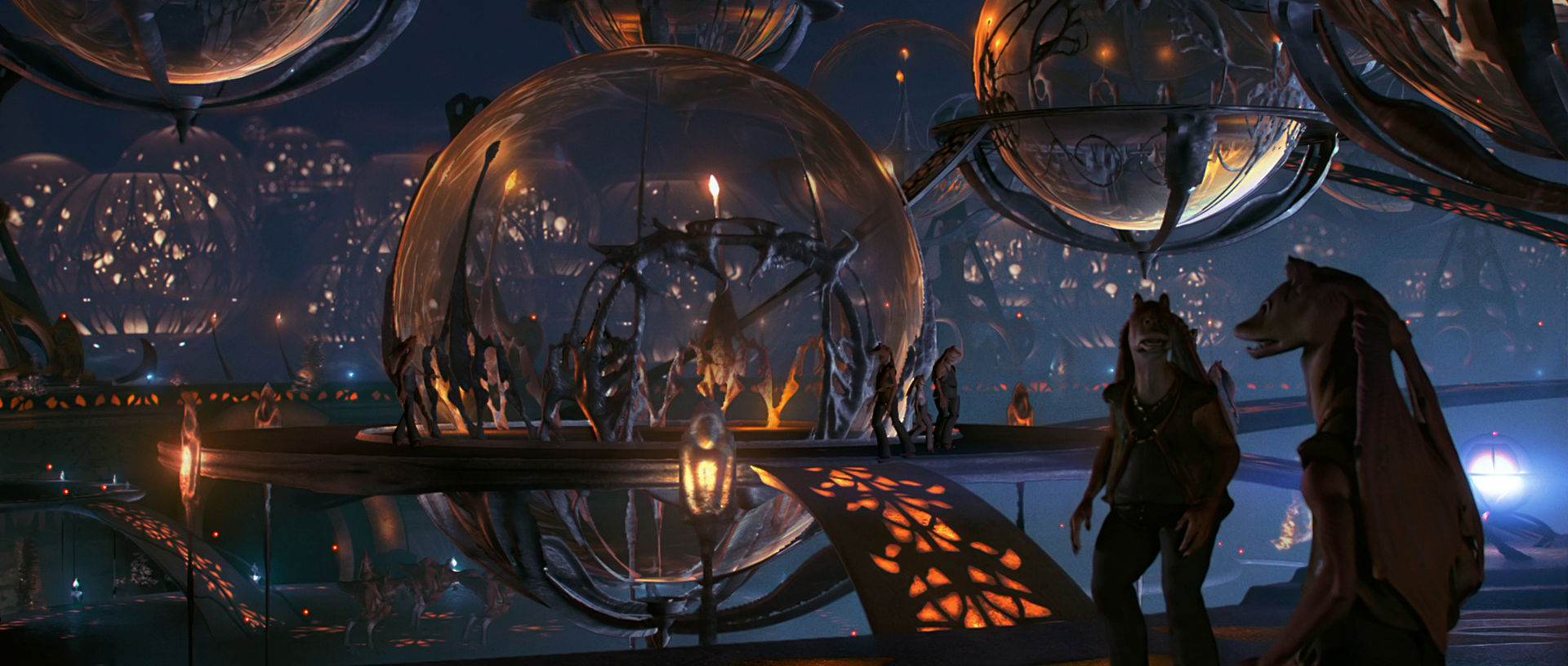
The Gungans built their underwater capital of Otoh Gunga following a tribal war.
Following the wars with humans, the Gungan tribes engaged in war with each other. The war came to an end due to the actions of Boss Gallo, a Gungan who united the tribes under one banner through diplomatic and military means. Gallo eventually attacked the city Spearhead, which was the home of the rogue warlord Boss Rogoe and the other Gungan holdouts, with a massive Gungan army. Gallo then founded the Gungan capital Otoh Gunga on Spearhead's foundations.
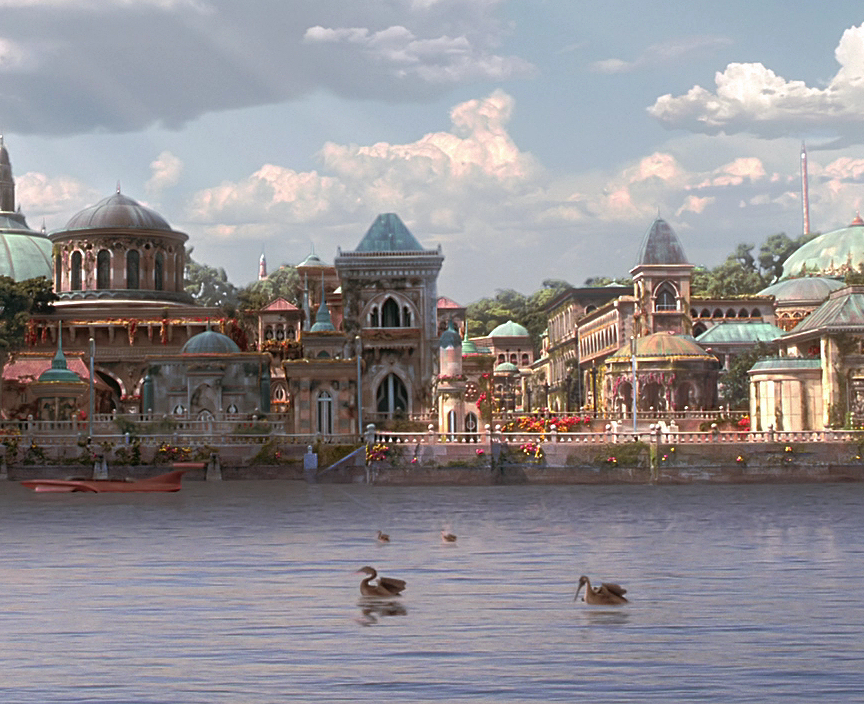
The Naboo had achieved a state of peace and prosperity at the end of a prolonged period of brutal conflict.
Meanwhile, the Naboo had fallen prey to a long period of brutal infighting among the large city-states of humans that inhabited the planet. Eventually, a general named Jafan managed to end the war, uniting the opposing factions through both force of arms and force of will. He became King Jafan, ruler of all the Naboo, and ushered in the Great Time of Peace.
In 867 BBY, Naboo joined the Galactic Republic, the democratic union that sought to govern the galaxy. The people of Naboo celebrated this event during the Festival of Light. In 832 BBY, under the direction of King Jafan, the capital city of Theed was founded along the banks of the Solleu River with the Theed Royal Palace built on the Cliffs of Theed.
Around 382 BBY during the High Republic Era, Naboo was under the rule of a , from whom Axel Greylark, a gambler and son of Supreme Chancellor Kyong Greylark, wanted to buy a yacht. At the same time, fellow Supreme Chancellor Orlen Mollo traveled across the Galactic Frontier aboard the Paxion, which displayed different vistas from various currently-distant worlds on a wall of its library. During a mission to end the Eiram and E'ronoh War, it displayed the Theed Royal Palace and other sites. The Naboo Palace and the city of Coruscant were the only locations Jedi Knight Gella Nattai recognized. Asked to attend along with delegates from numerous other worlds by Chancellors Mollo and Greylark, delegates from Naboo, wearing their cultural clothing, arrived on Eiram for the wedding of Phan-tu Zenn and Xiri A'lbaran that promised to end the war. At least two Gungans attended the celebration.
Later in the High Republic Era, the former Jedi Padawan Kantam Sy found the Force-sensitive Lula Talisola amongst the children cared for at an orphanage on Naboo. Returning to the Jedi Order, Sy became a Jedi Knight and Talisola's master. A Jedi temple on Naboo, the Gallo Temple, was also established at some point and regarded as a much-prized posting for Jedi Knights. It was the first posting of Elzar Mann after being knighted. By 232 BBY, the scion of the wealthy San Tekka clan, Vellis, was based on Naboo, alongside his husband, Marlowe, living in a large estate by the lakes.
In 228 BBY, with the creation of the Stormwall by the Nihil and its subsequent expansions, Naboo was eventually included in the Occlusion Zone. The Nihil General Abediah Viess led an invasion of Naboo, establishing the planet as a military base and putting it under Nihil occupation. Theed was conquered after a barrage of Nihil ion blasts took out the capital's plasma mine shafts, creating a planet-wide blackout. Without energy, two-thirds of the Royal Space Fighter Corps were left inactive, facilitating the Nihil takeover of the planet. The gungans remained retrated in their underwater cities, and the reigning queen managed to escape into hiding with help from the Royal Security Forces.
Under the supervision of Viess, the Nihil occupation of the planet enacted a widespread forced disarmament, and subsequently took a considerable amount of resources from the richer inhabitants of Naboo as "tribute". Although the quick Nihil victory meant that the occupation on Naboo was less ruthless on the general population than the ones on other planets inside the Occlusion Zone, the initial raid led to some amount of casualties. A joint Jedi-Republic Defense Coalition assault on Naboo was later able to liberate the world.
The fourteen year old Padmé Amidala was elected to be the new Monarch of Naboo after Queen Sanandrassa decided to only have a single term. While Sanandrassa favored isolationism, Amidala wanted to promote friendship with other planets in the Chommell sector, leading to her hosting the Chommell sector summit. Additionally, after being urged to by Captain Quarsh Panaka, Amidala took on a group of Handmaidens, whom she quickly befriended, planning her days with them instead of Panaka.
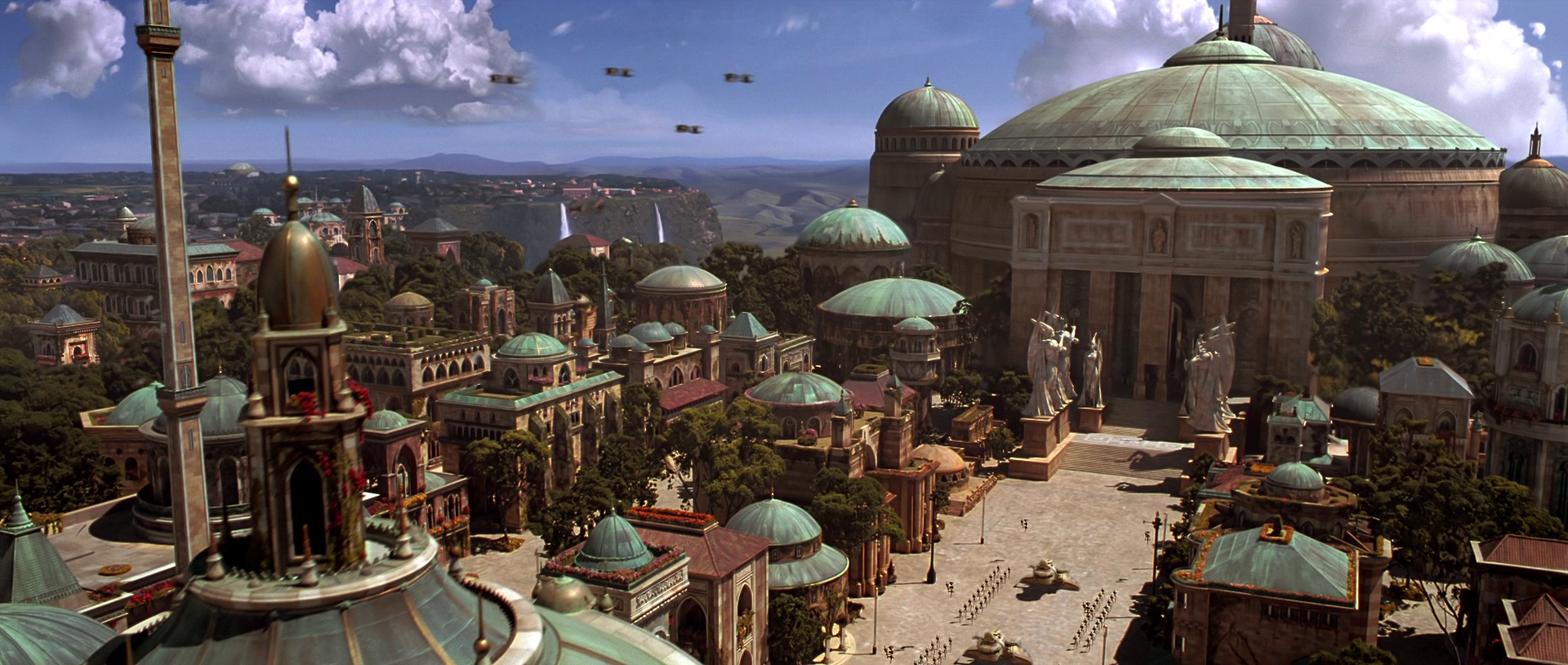
The capital of Theed fell to the forces of the Trade Federation during the Invasion of Naboo.
Right as the Naboo summit ended, about ten years before the Clone Wars, Naboo was blockaded and invaded by the Trade Federation. Amidala guided her home planet through the invasion and sealed a new friendship with the Gungans. In an upsurge of sympathy and solidarity toward the invaded planet, the queen's emissary in the Galactic Senate, the seemingly unassuming Senator Sheev Palpatine, was made Supreme Chancellor of the Republic.
Naboo recovered quickly from the invasion under Amidala's remaining years, managing to almost completely restore its harvests and crop yields by the end of her final term. One of Amidala's final projects, which continued under the reign of her successor, was the implementation of an ion pulse in Theed in case of future invasions. The decision to install the pulse, whilst meeting with general approval, was nevertheless controversial as some, such as Quarsh Panaka, favored the idea of more robust and extensive defenses whilst others felt that installing any weapon system was against everything Naboo stood for in terms of peace.
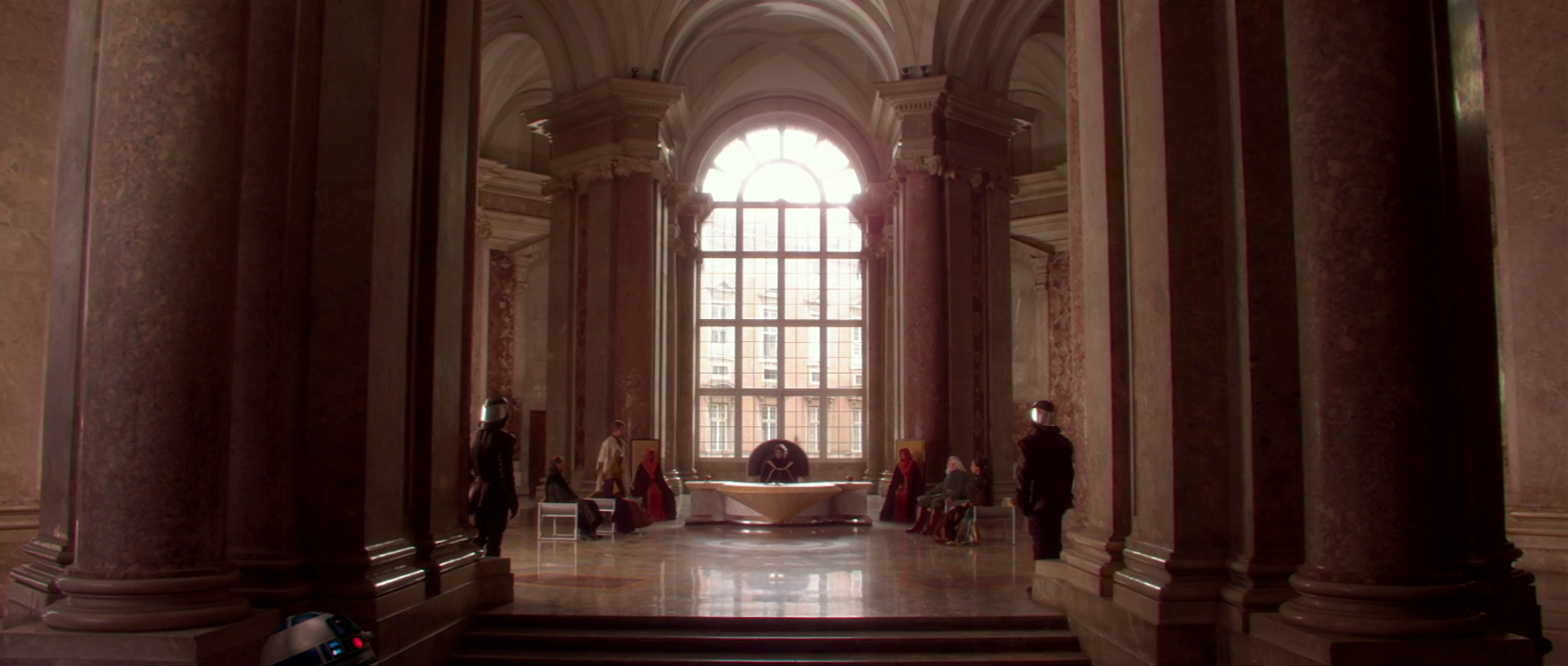
The government of Naboo remained loyal to the Galactic Republic during the Separatist Crisis and the Clone Wars.
A series of miners strikes occurred on the moons of Naboo. A mudslide disaster occurred on in 22 BBY. Both the Naboo and the Gungans remained loyal to the Republic during the Clone Wars, though many on Naboo were in despair at the idea of a galaxy-wide war. Senator Padmé Amidala and Representative Jar Jar Binks worked together to represent the interests of the Naboo and Gungans respectively in the Galactic Senate. During the Clone Wars, Neeyutnee served as Queen of Naboo. Early in the war, Amidala and Skywalker returned to the planet for their wedding and spent several days on world for a honeymoon.
Amidala and Binks, with the help of the Jedi Order and the Gungan Peppi Bow, discovered the Separatist scientist Nuvo Vindi's secret laboratory in the Eastern swamps. They managed to prevent Vindi from releasing stockpiles of the Blue Shadow Virus into Naboo's surface. During the Battle of Mon Cala, elements of the Gungan Grand Army led by Representative Binks were dispatched to the watery planet of Mon Cala to aid Senator Amidala, the Jedi, the Clone SCUBA troopers, and the Mon Calamari Prince Lee-Char's forces against the Separatist commander Riff Tamson and his Quarren allies.
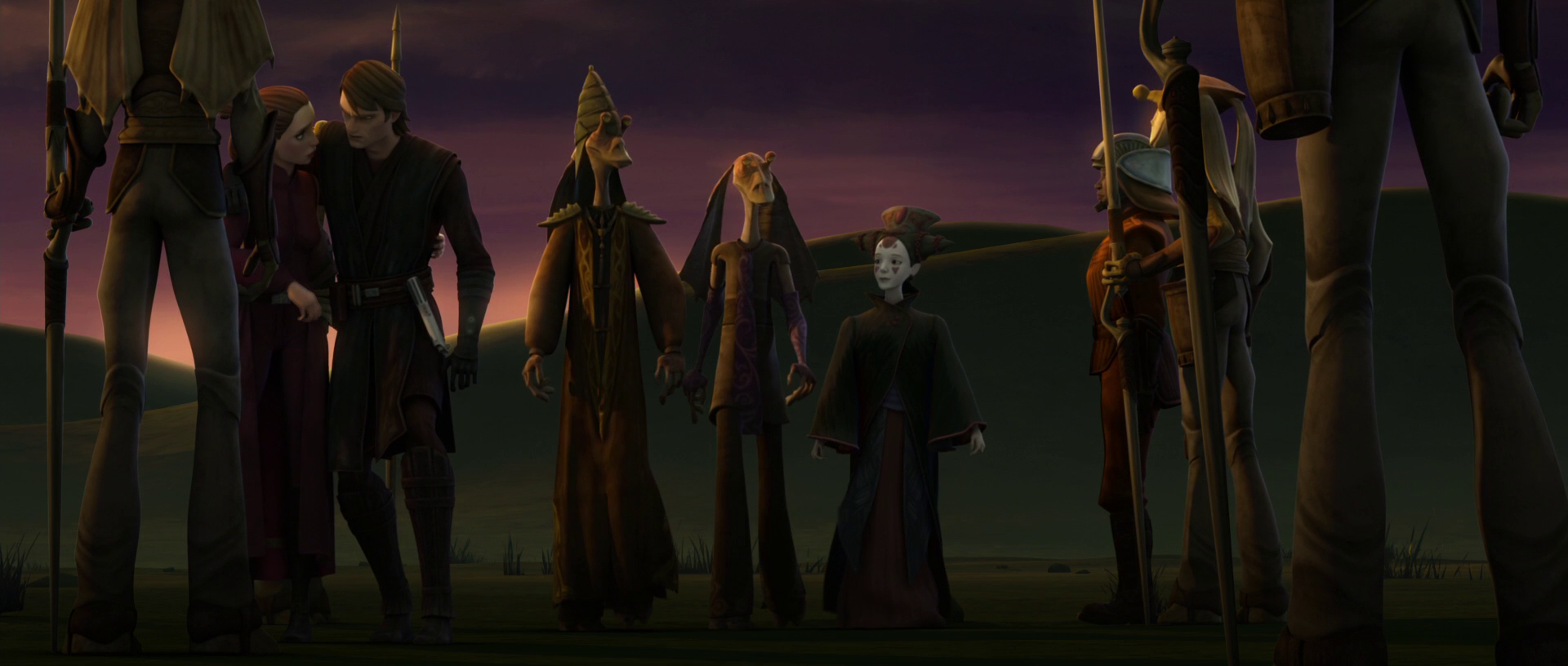
By working together the Naboo and the Gungans prevented a Separatist attack on their shared homeworld.
Later, the Gungan Boss Lyonie came under the influence of the pro-Separatist minister Rish Loo. Under Loo's control, Lyonie ordered the Gungan Grand Army to march on the Naboo capital of Theed. Their plan was to rendezvous with a Separatist droid army led by General Grievous, who had been sent by Count Dooku himself. Rish Loo and Dooku's plot was foiled by the combined efforts of Senator Amidala, Representative Binks, the Jedi Knight Anakin Skywalker, and General Roos Tarpals. However, the Naboo and Gungans were forced to release Grievous after Dooku took Skywalker hostage.
During the Festival of Light, Dooku sent Cad Bane and his team of bounty hunters to kidnap Palpatine in order to free Separatist prisoners from Republic captivity. At first, Bane and Moralo Eval were successful in capturing Palpatine. However, they were stopped by one of their fellow bounty hunters, Rako Hardeen, who was really Obi-Wan Kenobi in disguise. But, Bane planned a diversion in order to lure the Republic forces away while Dooku carried out the kidnapping. This failed, however, when he fought Kenobi and Skywalker.
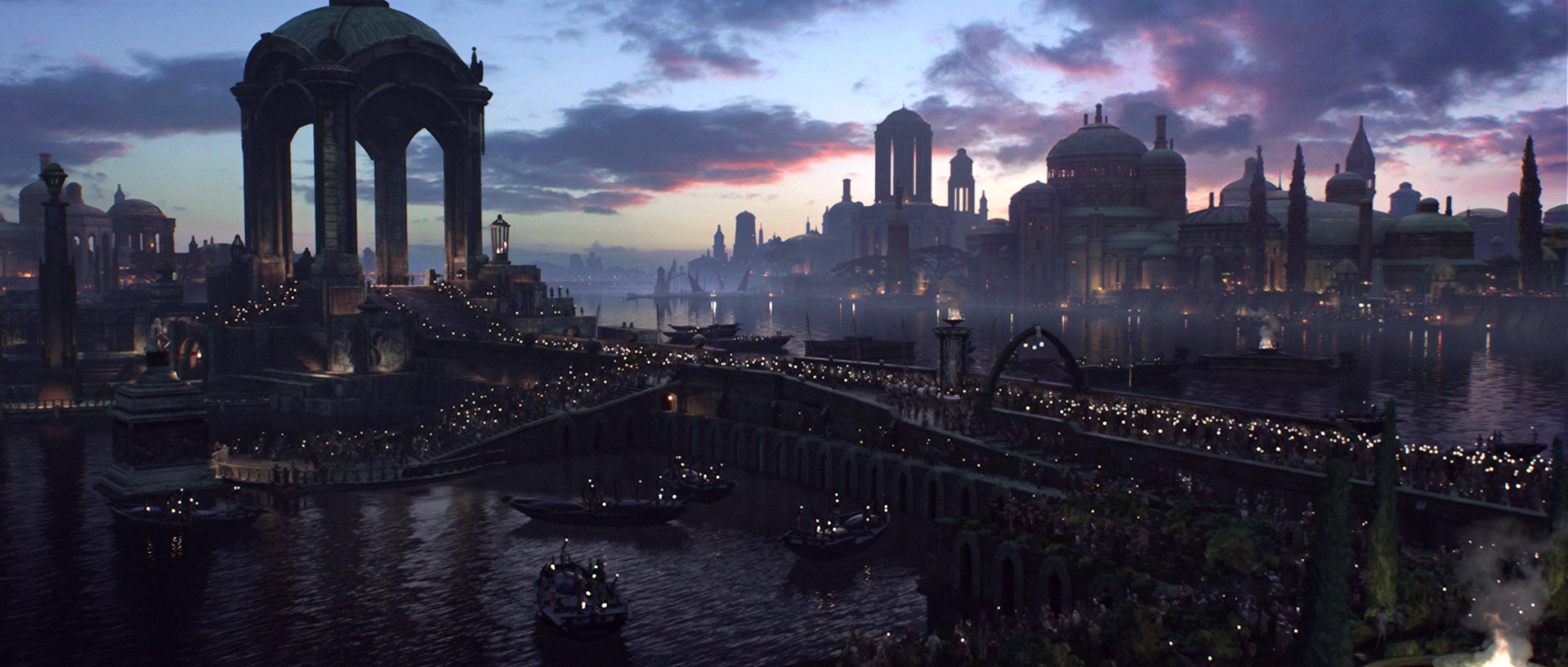
Naboo was in a state of mourning for Padmé Amidala, who died following the rise of the Galactic Empire.
Following the rise of the Galactic Empire and Palpatine's self-proclamation as Emperor, Naboo hosted one of the new regime's military garrisons. Shortly after the end of the Clone Wars, thousands of citizens gathered in the streets of Theed in order to assist to Amidala's funeral procession. At that time, Sio Bibble had finally decided to retire from governorship over Naboo, setting the stage for an election that Saché was seemingly going to win. However, Naboo's internal politics were also interfered with by the new regime; while the people were still permitted to elect their monarchs, those who gained the office had little real power or influence. The position of governor was also abolished. Instead, all major decisions regarding Naboo were placed firmly in the hands of the sector's Moff, a position held by Palpatine's close ally and former Security Forces officer Quarsh Panaka, who was appointed before the election for governor could even happen.
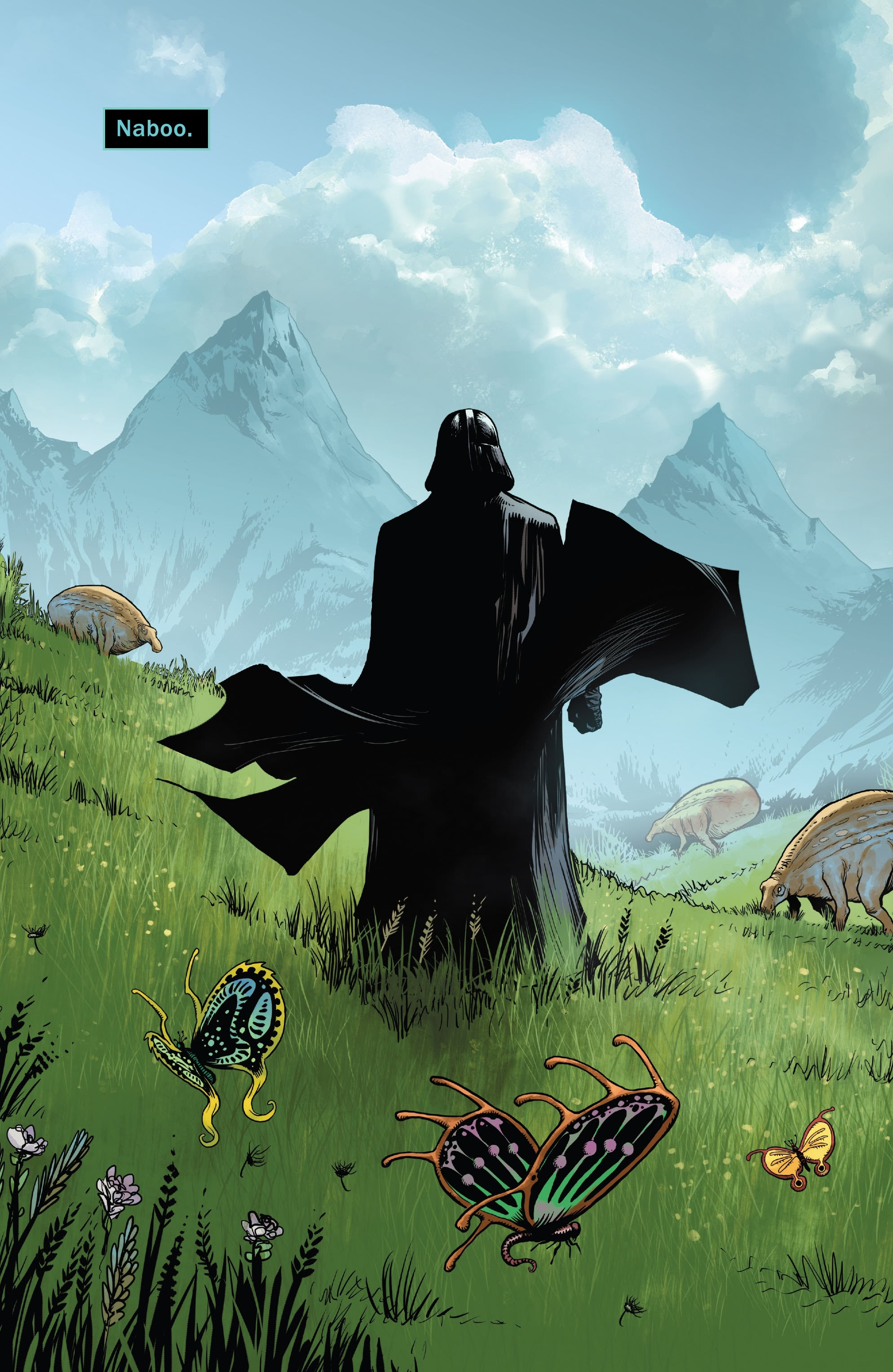
Darth Vader on Naboo in 3 ABY
Though one of the less corrupt Imperial officials, Panaka was assassinated by Saw Gerrera's Partisans insurgency in 3 BBY. Due to its status as Palpatine's homeworld, Naboo prospered during the Age of the Empire. Its economy and environment were regarded to be far healthier than most worlds which had been subject to Imperial rule. Nevertheless, the people of Naboo resented the fact that it was their world that brought forth a man like Palpatine. The Empire also demilitarized Naboo and dissolved the Royal Naboo Security Forces's starfighter wing. As a result, Naboo lacked any combat-trained pilots by the time of the Battle of Endor.
Sabé, former handmaiden of Padme Amidala, brought Darth Vader to Naboo in 3 ABY. Typho and his rebel team fought him. The rebels went as far as baiting a Sando aqua monster into fighting the Dark Lord of the Sith. Ric Olié and his rebel cell, the Amidalans, attempted to protect Padmé's tomb from Vader, but were killed in the process. The handmaidens gathered for a final stand. They were unable to prevent Darth Vader from breaching the tomb.
When news of Emperor Palpatine's death had spread across the galaxy after the Battle of Endor, an outpouring of joy occurred on Naboo, the inhabitants of which considered themselves free at last.
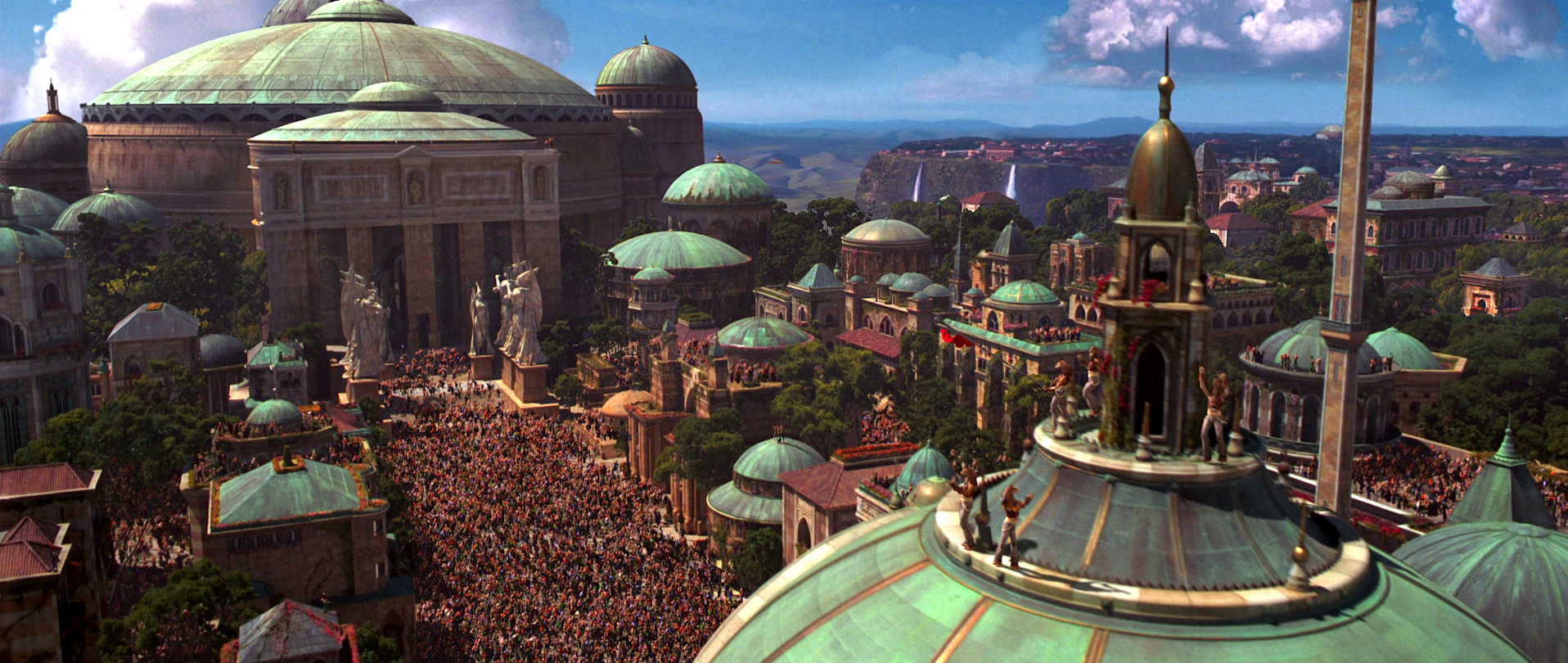
The death of Galactic Emperor Sheev Palpatine was celebrated on his homeworld of Naboo by humans and Gungans alike.
Some twenty days after the Battle of Endor—which resulted in the defeat of the Empire by the Alliance to Restore the Republic—the Royal House of Naboo received a visit by Princess Leia Organa of Alderaan, who had been sent by Mon Mothma, Chancellor of the Alliance. In the royal palace's throne room, Organa met the then-Queen of Naboo, Sosha Soruna, and asked for Naboo's support in the establishment of a New Republic and the restoration of the Senate. The queen heartily accepted Organa's offer, claiming that the Naboo felt great shame over Palpatine's actions.
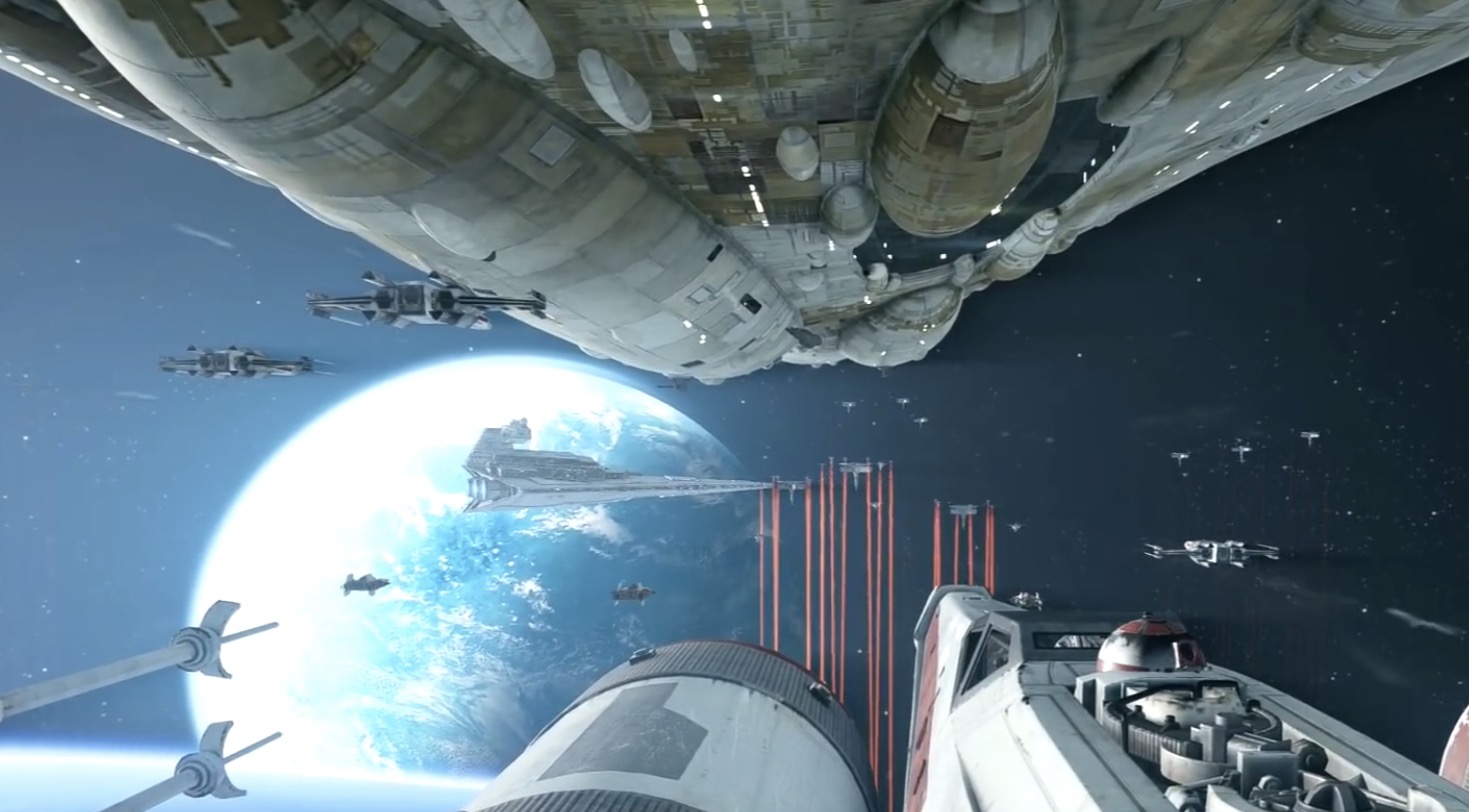
Aided by the Rebel Alliance, the Naboo fought to save their world from the Empire during Operation: Cinder.
During the meeting, gigantic storms suddenly began to rage, and Naboo's orbital sensors were all jammed. The Empire had set up a climate disruption array in orbit, as ordered by the late Emperor Palpatine. Named Operation: Cinder, the Empire's plan was to disrupt Naboo's environment and climate, and thus render the planet inhospitable. The storms caused fires and flooding across the world, and many buildings were demolished. Soruna, Organa, and Alliance pilot Shara Bey finally decided to use three old N-1 starfighters—that had been stored by Queen Neeyutnee in the Theed Hangar during the Clone Wars—and go protect Naboo by destroying the Empire's satellites. Once in space, the three women were attacked by a squadron of TIE fighters, but managed, nonetheless, to knock out all of the satellites. A Rebel fleet led by Lando Calrissian and Nien Nunb soon arrived to take care of the Imperial forces. The fleet consisted of members of Danger Squadron, which arrived in T-65B X-wing starfighters led by Danger Leader Duros Shriv Suurgav, Nunb in the Mellcrawler II, and the MC80 Star Cruiser Restoration.
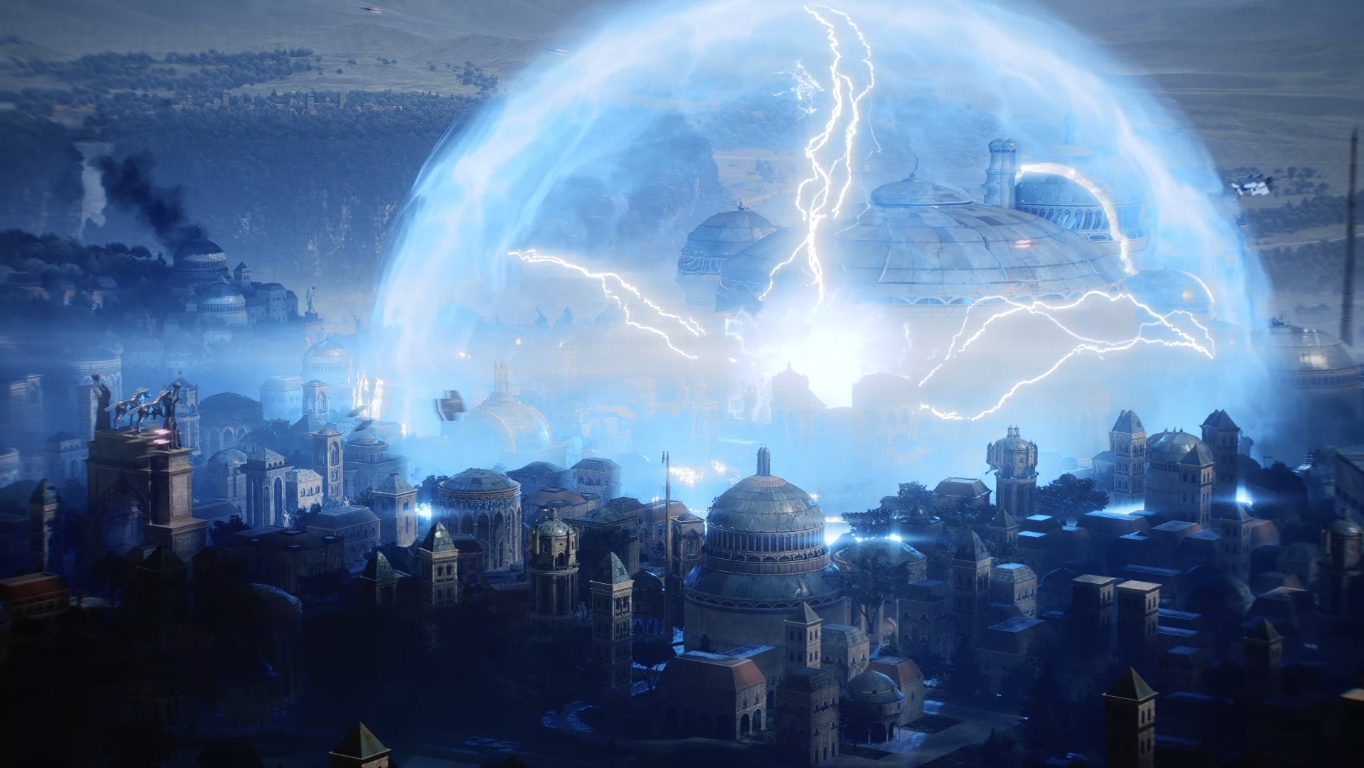
With their weapons and vehicles disabled by Theed's ion defense, the Imperials were forced to surrender to the Naboo and their Rebel allies.
Danger Squadron temporarily included former Inferno Squad members and recent Imperial defectors Iden Versio and Del Meeko to assist the three women in the destruction of the satellites. After their destruction, the Imperial II-class Star Destroyer Torment was then engaged by Danger Squadron and several Y-wing bombers, and the Restoration delivered the fatal blow to the hull of the Torment. The Alliance forces then gathered upon the ground to immobilize remaining Imperials in the final ground assault to try and take control of Theed. Imperial forces were immobilized by the ion pulse rendering all of their weapons and vehicles inoperable leading to the surrender of Imperial forces.
Due to the fact that Naboo had been the Emperor's homeworld, the planet became a rallying point for Imperial sympathizers. Months after the failed Operation: Cinder, the Imperial Navy deployed three attack forces to wipe out the New Republic's presence in the Naboo system. However, these attempts were successfully foiled by Corona Squadron.
During the Cold War nearly thirty years later between the First Order and the Resistance, Senator Thadlé Berenko represented Naboo in the reconstituted New Republic Senate. Berenko was among the millions killed when the First Order destroyed Hosnian Prime, the home of the Senate at the time.
By 35 ABY, Naboo's skies were being patrolled by Star Destroyers from the First Order as part of its expansive efforts to establish galactic dominance. At some point later, Naboo engaged in open rebellion against the First Order, simultaneous with other planets such as Bespin and Coruscant leading to the successful overthrow of the entire regime.
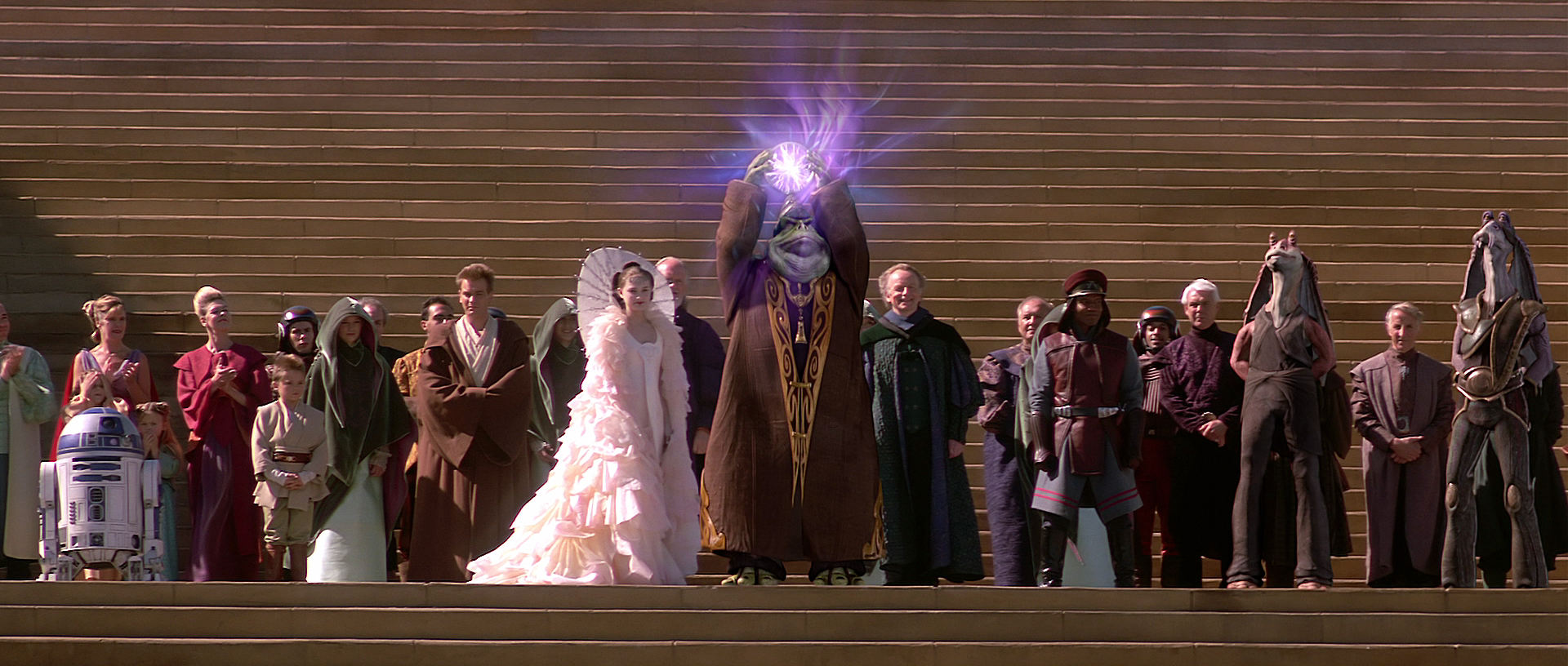
The commitment to the defense of Naboo brought its human and Gungan inhabitants together when threatened by an external enemy.
Naboo was inhabited by two societies: an indigenous species of intelligent amphibians called the Gungans and a group of peaceful humans who were referred to as the Naboo. In the distant past, a cultural misunderstanding resulted in a serious quarrel between the Gungan and the human colonists. Both sides refused to acknowledge their responsibilities in the rift, and the two groups ostracized each other for the longest time. That situation lasted until the Invasion of Naboo by the Trade Federation forced the humans and Gungans to join forces.
Naboo culture fostered the artist in every citizen, encouraging children to become musicians, performers, painters, and similar professions. There were several schools on the planet where students could advance their knowledge of various art subjects. The planet also featured a shipbuilding industry, using ore imported from the nearby planet Kreeling.
Both the Naboo and Gungans had a close relationship with water. Fish was an important food to the people of Naboo.
Naboo first appeared in the 1999 film Star Wars: Episode I The Phantom Menace, the first installment of the Star Wars prequel trilogy. It was later featured in 2002's Star Wars: Episode II Attack of the Clones and 2005's Star Wars: Episode III Revenge of the Sith.
The real-world locations for Naboo were Plaza de España in Seville, Spain and Lake Como and Caserta Palace in Italy, among others. The buildings of Naboo were based on the Hagia Sophia, a cathedral turned mosque then turned museum located in Istanbul, Turkey. On the other hand, the architecture of Naboo was inspired by the domed and scalloped roofs of the Marin County Civic Center.
The exact number of moons in Naboo is currently unknown. In Attack of the Clones, Mace Windu mentions "spice miners on the moons of Naboo." However, the 2016 reference book Star Wars: Complete Locations states that Naboo has only one moon. The 2018 novel Thrawn: Alliances confirms that Naboo has three moons. There is also a discrepancy over the names of the three moons: Nexus of Power states that the moons where Ohma-D'un, Rori, and a small third moon that has no in-universe name, while Rise of the Separatists, a sourcebook from Star Wars Roleplaying, states that the three moons of Naboo are Rori, Veruna, and Ohma-D'un. However, the novel Leia, Princess of Alderaan prominently includes the moon Onoam. Rori and Onoam have similar descriptions, but as yet there has been no clarification for the discrepancy.
- William Shakespeare's The Phantom of Menace: Star Wars Part the First
- William Shakespeare's The Clone Army Attacketh: Star Wars Part the Second
- William Shakespeare's Tragedy of the Sith's Revenge: Star Wars Part the Third
- Disney Infinity 3.0
- LEGO Star Wars: The Freemaker Adventures — "The Kyber Saber Crystal Chase"
- LEGO Star Wars: The Freemaker Adventures — "Duel of Destiny"
- LEGO Star Wars: The Freemaker Adventures — "Return of the Kyber Saber"
- LEGO Star Wars: The Freemaker Adventures — "A New Home"
- LEGO Star Wars: The Freemaker Adventures — "Beware, the Gamorrean Flu!"
- LEGO Star Wars: The Freemaker Adventures — "Return to the Wheel"
- LEGO Star Wars: The Freemaker Adventures — "Flight of the Arrowhead"
- LEGO Star Wars: Droid Tales Episodes I-III
- LEGO Star Wars: All-Stars — "From Trenches to Wrenches: The Roger Story"
- LEGO Star Wars: All-Stars — "Lo, I am Manufactured"
- LEGO Star Wars: The Skywalker Saga
- Fortnite